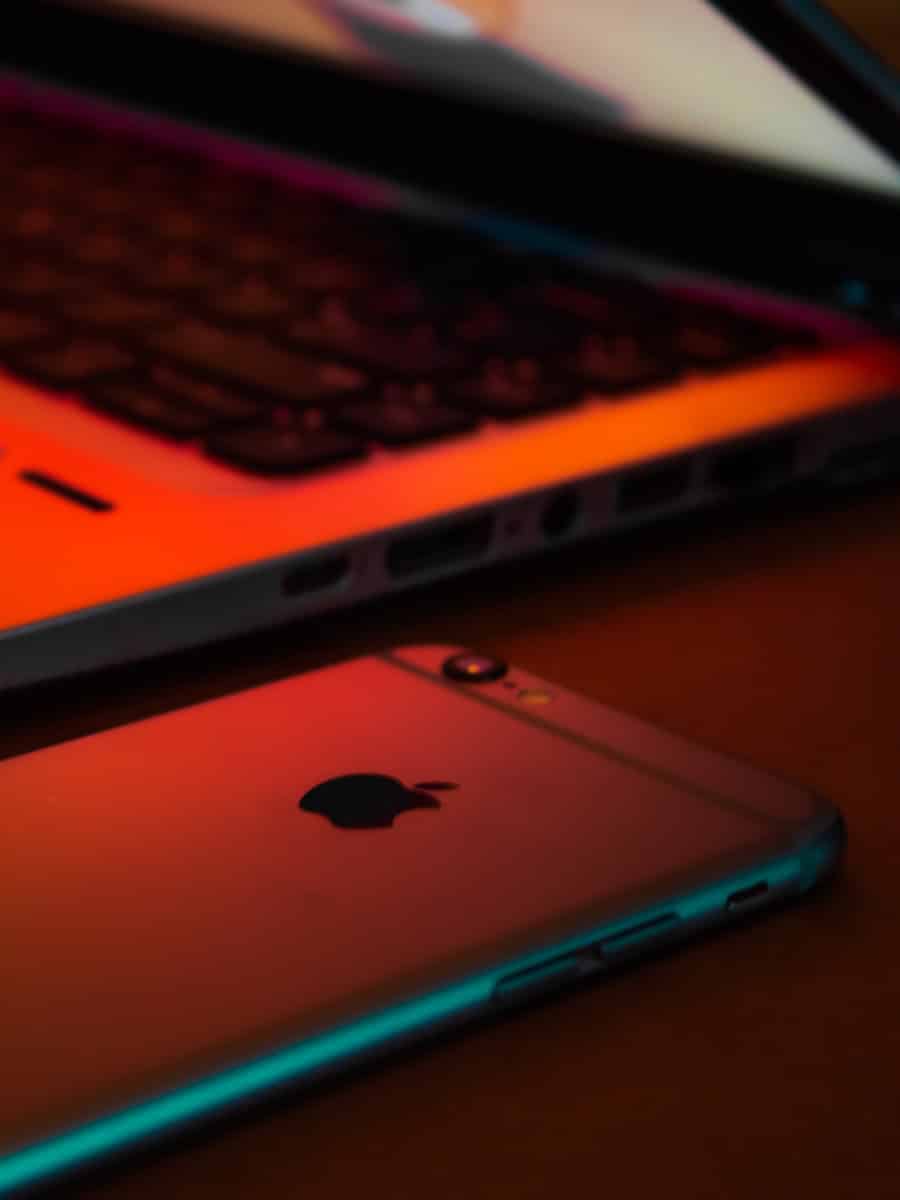Transferring files from your PC to your iPhone doesn’t have to be a hassle. With several easy methods available, you can quickly move photos, documents, and other data between devices. The simplest way to transfer files is by using a USB cable and iTunes on your Windows PC.
Want to skip the wires? You can use AirDrop alternatives or cloud storage services for wireless file transfers. These options let you move files without connecting your devices directly.
Each transfer method has its pros and cons. To help you choose, here’s a quick comparison of popular file transfer options:
| Method | Speed | Ease of Use | Requires Internet |
|---|---|---|---|
| USB Cable | Fast | Easy | No |
| Cloud Storage | Varies | Simple | Yes |
| Wi-Fi Transfer | Moderate | Medium | Yes (local network) |
| AirDrop Alternative | Fast | Easy | No |
Transferring Files from Your PC to Your iPhone
There are several ways to transfer files from your PC to your iPhone. Some methods are better for certain file types. Some are faster or easier. We will look at the most common methods. This will help you pick the best way for your needs.
Method 1: Using a USB Cable and File Explorer
This is the most common way to transfer files. It is best for transferring large files or many files at once.
- Connect your iPhone to your PC with a USB cable.
- Open File Explorer on your PC.
- Your iPhone will appear as a device in the sidebar. Click on it.
- You can now drag and drop files from your PC to your iPhone.
Pros:
- Fast for large files
- Simple to use
Cons:
- Requires a cable
- Limited to certain file types
Method 2: iCloud Drive
iCloud Drive lets you store files in the cloud. You can access these files from any device. This includes your PC and iPhone.
- Make sure you are signed in to iCloud with the same Apple ID on your PC and iPhone.
- On your PC, go to iCloud.com and sign in.
- Upload the files you want to transfer to iCloud Drive.
- On your iPhone, open the Files app.
- Select iCloud Drive.
- You will see the files you uploaded from your PC. You can open them or save them to your iPhone.
Pros:
- Wireless
- Access files from any device
Cons:
- Can be slow for large files
- Requires an iCloud account
Method 3: AirDrop
AirDrop lets you transfer files wirelessly between Apple devices. This method is best for quick transfers of photos and videos.
- Make sure both your PC and iPhone have Bluetooth and Wi-Fi turned on.
- On your iPhone, open the Control Center and turn on AirDrop.
- On your PC, open the file you want to transfer.
- Click the Share button and select AirDrop.
- Select your iPhone from the list of devices.
- On your iPhone, accept the file transfer.
Pros:
- Wireless
- Fast for small files
Cons:
- Only works between Apple devices
- Can be unreliable
Method 4: Third-Party Apps
There are many third-party apps that can help you transfer files. These apps often offer extra features.
- Choose a third-party app. Popular options include Documents by Readdle and FileBrowser.
- Install the app on your iPhone.
- Follow the app’s instructions to connect to your PC and transfer files.
Pros:
- Can offer extra features
- May be faster than other methods
Cons:
- Requires installing an app
- Some apps may cost money
| Method | Pros | Cons |
|---|---|---|
| USB Cable | Fast for large files, simple to use | Requires a cable, limited to certain file types |
| iCloud Drive | Wireless, access files from any device | Can be slow for large files, requires an iCloud account |
| AirDrop | Wireless, fast for small files | Only works between Apple devices, can be unreliable |
| Third-Party Apps | Can offer extra features, may be faster than other methods | Requires installing an app, some apps may cost money |
Transferring Contacts from Your iPhone to Your PC
You can also transfer information from your iPhone to your PC. This is helpful for backing up your data. Here’s how to transfer your contacts:
You can transfer your contacts from your iPhone to your PC using iCloud or a third-party app.
Using iCloud:
- On your iPhone, go to Settings > [Your Name] > iCloud.
- Make sure Contacts is turned on.
- On your PC, go to iCloud.com and sign in.
- Click on Contacts.
- Select the contacts you want to transfer.
- Click the gear icon in the bottom left corner.
- Select Export vCard.
- This will download a file containing your contacts to your PC.
Using a Third-Party App:
Many third-party apps can help you transfer contacts. These apps often offer extra features such as merging duplicate contacts.
- Choose a third-party app. Popular options include iMazing and CopyTrans Contacts.
- Install the app on your PC.
- Follow the app’s instructions to connect to your iPhone and transfer contacts.
Preparation for File Transfer
Before transferring files from your PC to iPhone, you need to ensure compatibility and set up your devices correctly. This step is crucial for a smooth transfer process.
Understanding Compatible Formats
Your iPhone supports various file formats. For images, use HEIC, JPEG, PNG, or GIF. For videos, MP4 is widely compatible. Documents like PDF, DOC, and XLSX work well. Music files should be in MP3 or AAC format.
Check your files before transfer. Convert incompatible formats if needed. This saves time and prevents errors during the process.
Some apps may have specific format requirements. Research the apps you plan to use on your iPhone. This helps you prepare files that will work seamlessly.
Setting Up Devices
Start by updating your iPhone’s iOS and your Windows PC. This ensures compatibility and access to the latest features.
On your iPhone, enable Wi-Fi and sign in to your Apple ID. This allows for wireless transfer methods.
For your Windows PC, install iTunes if you plan to use it. It’s not always necessary but can be helpful for some transfer methods.
Check your USB cable if you’re using a wired connection. Make sure it’s in good condition and compatible with your devices.
| Device | Preparation Steps |
|---|---|
| iPhone | Update iOS, Enable Wi-Fi, Sign in to Apple ID |
| Windows PC | Update OS, Install iTunes (optional), Check USB cable |
These steps create a solid foundation for transferring your files efficiently and securely.
Using iTunes for File Transfer
iTunes offers a reliable method to transfer files between your PC and iPhone. It supports various file types and allows easy synchronization of content.
Synchronizing with iTunes
To begin syncing with iTunes, connect your iPhone to your PC using a USB cable. Open iTunes and select your device when it appears. Choose the content types you want to sync from the left sidebar. Click the “Sync” button to start the transfer.
iTunes lets you sync music, movies, TV shows, books, and more. You can select specific playlists, albums, or genres to transfer. For apps that support file sharing, use the “File Sharing” section in iTunes.
Set up automatic syncing to keep your content updated. Go to “Summary” and check “Sync with this iPhone over Wi-Fi”. This enables wireless syncing when your iPhone and PC are on the same network.
Transferring Photos and Videos
iTunes provides options for transferring photos and videos. In the “Photos” tab, check “Sync Photos” and choose a source folder on your PC. Select “All folders” or pick specific albums to sync.
For videos, use the “Movies” and “TV Shows” tabs. Choose the videos you want to transfer. iTunes converts incompatible formats automatically.
To save space, enable “Optimize iPhone Storage” in your device settings. This keeps smaller versions on your iPhone and full-resolution copies in iCloud.
| File Type | iTunes Tab | Notes |
|---|---|---|
| Photos | Photos | Select folders or albums |
| Videos | Movies/TV Shows | Automatic format conversion |
| Music | Music | Choose playlists or albums |
| Books | Books | Sync purchased and imported books |
Alternative Transfer Methods
Several options exist for transferring files from your PC to your iPhone without relying on traditional methods. These alternatives offer flexibility and convenience for various file types and situations.
Transferring via Cloud Storage Services
Cloud storage services provide a seamless way to move files between devices. Popular options include iCloud Drive, Dropbox, Google Drive, and OneDrive. To use these:
- Install the cloud service app on your iPhone
- Upload files from your PC to the cloud storage
- Access the files on your iPhone through the app
Cloud services often offer free storage tiers. They sync automatically across devices. This method works well for larger files or frequent transfers.
Pros:
- Access files from anywhere
- Easy to share with others
Cons:
- Requires internet connection
- May have storage limits on free plans
| Service | Free Storage | Max File Size |
|---|---|---|
| iCloud | 5GB | 50GB |
| Dropbox | 2GB | 50GB |
| Google Drive | 15GB | 5TB |
| OneDrive | 5GB | 250GB |
Utilizing AirDrop
AirDrop lets you transfer files wirelessly between Apple devices. While primarily for Mac-to-iPhone transfers, you can use it with a Windows PC by setting up a virtual machine running macOS.
Steps to use AirDrop:
- Set up a macOS virtual machine on your Windows PC
- Enable AirDrop on both devices
- Select files and choose “AirDrop” as the sharing method
AirDrop works quickly for nearby devices. It’s ideal for occasional transfers when you don’t want to use cables or cloud services.
Third-Party File Transfer Applications
Numerous apps facilitate file transfers between PCs and iPhones. Some popular options include:
- AirDroid
- SHAREit
- Send Anywhere
- Snapdrop
These apps typically work over Wi-Fi or cellular data. They often offer features like:
- Drag-and-drop interfaces
- File compression
- Cross-platform compatibility
To use these apps:
- Install on both your PC and iPhone
- Connect both devices to the same Wi-Fi network
- Select files on your PC and send to your iPhone
Third-party apps can be useful for frequent transfers or when you need additional features beyond basic file movement.
Transferring Files Without iTunes
You can transfer files from PC to iPhone without iTunes using built-in Windows features or alternative software.
Windows File Explorer method:
- Connect your iPhone to the PC with a USB cable
- Open File Explorer and find your iPhone
- Drag and drop files to the internal storage
Alternative software like iMazing or WinX MediaTrans offer more advanced features:
- Full device backups
- Photo management
- Music syncing without iTunes
These methods give you direct access to your iPhone’s storage. They work well for large file transfers or when you need more control over the process.
Managing and Accessing Transferred Files
After transferring files from your PC to iPhone, you’ll need to organize and access them efficiently. The iOS Files app provides a central hub for file management, while proper organization techniques help keep everything tidy.
Using iOS Files App
The Files app on your iPhone serves as the main interface for managing transferred documents. Open the app to view all your files in one place. You’ll see folders for different apps and cloud storage services.
To find PC-transferred files, look in the “On My iPhone” section. Tap folders to browse their contents. The Files app lets you view, edit, and share documents right on your device.
Use the search bar to quickly locate specific files. The app supports common file types like PDFs, images, and Office documents. You can also create new folders to better organize your transferred content.
Organizing Files on an iPhone
Keeping your transferred files organized makes them easier to find and use. Create a logical folder structure that matches your needs. For example, you might have separate folders for work, personal, and media files.
Use descriptive file names to identify content at a glance. The Files app lets you rename items by tapping and holding, then selecting “Rename”. Move files between folders by dragging and dropping or using the “Move” option.
Consider using tags to categorize files across different folders. The Files app supports color-coded tags that you can apply to any item. This helps you quickly filter and find related documents.
| Organization Tip | Description |
|---|---|
| Folder Structure | Create separate folders for different types of files |
| File Naming | Use clear, descriptive names for easy identification |
| Tagging | Apply color tags to categorize files across folders |
Regularly review and clean up your files to prevent clutter. Delete or archive old documents you no longer need on your iPhone. This frees up storage space and keeps your file system tidy.
Frequently Asked Questions
Transferring files between a PC and iPhone can be done through various methods. These include using USB cables, wireless options, and third-party apps. Each method has its own steps and requirements.
What are the steps to transfer files from a PC to an iPhone using a USB cable?
Connect your iPhone to the PC with a USB cable. Open the Apple Devices app on Windows. Choose “Files” in the sidebar. Drag files from your PC to the app window. Select an app to receive the files. Disconnect your iPhone when done.
How can I transfer files from a PC to an iPhone without using iTunes?
Use the Files app on your iPhone. Connect your device to the PC. Open the Apple Devices app. Select “Files” and choose an app. Drag files to transfer. On your iPhone, open the Files app. Navigate to “On My iPhone” to find your transferred files.
What is the process for wirelessly transferring files from an iPhone to a PC?
Enable Wi-Fi sync in iTunes on your PC. Connect your iPhone to the same network. Open the Files app on your iPhone. Select the files to transfer. Tap “Share” and choose “AirDrop” or a cloud service. Select your PC as the destination.
How do I transfer videos from a PC to an iPhone with a USB cable?
Connect your iPhone to the PC. Open the Apple Devices app. Click on “Videos” in the sidebar. Drag video files from your PC to the app window. Wait for the transfer to complete. Disconnect your iPhone and find the videos in your Photos app.
Is there a way to transfer files from an iPhone to a PC for free?
Yes, several free methods exist. Use iCloud Drive to sync files. Enable file sharing in iTunes. Use email for smaller files. Try free third-party apps like EaseUS MobiMover. These options don’t require additional costs.
Can you suggest methods for transferring music from a PC to an iPhone using iTunes?
Open iTunes on your PC. Connect your iPhone. Click on the device icon. Select “Music” in the sidebar. Check “Sync Music” and choose your options. Click “Apply” to start the transfer. Wait for the sync to finish before disconnecting your iPhone.
| Method | Pros | Cons |
|---|---|---|
| USB Cable | Fast, reliable | Requires physical connection |
| Wi-Fi Sync | Wireless, convenient | Slower than USB |
| iCloud | Access anywhere | Limited free storage |
| Third-party apps | Additional features | May have ads or costs |







